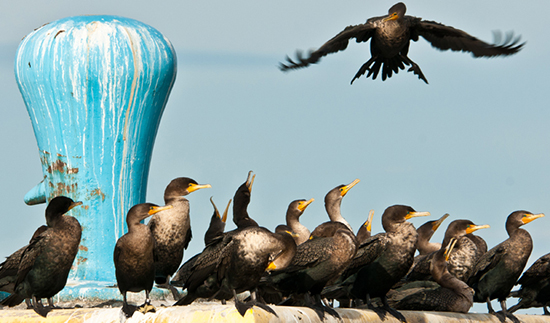Caspian terns and double-crested cormorants are a growing threat to juvenile chinook and steelhead in the Columbia River estuary,consuming an estimated 24.6 million juvenile Chinook and steelhead that reached the estuary in 2010.
Caspian terns nest primarily on East Sand Island. Since 2009, the Corps has built four alternative nesting sites to help lure the birds out of the estuary. As a result, the Corps has been able to reduce the size of the nesting acreage on East Sand Island.
Cormorants are a more recent threat. In 1989, the cormorant nesting population on East Sand Island totaled only about 100 pairs. By 2010, there were 13,596 breeding pairs on the Island – the largest double-crested cormorant colony in western North America.
Caspian terns and double-crested cormorants also nest on islands in the mid-Columbia River, where they also prey on juvenile salmon and steelhead. Find out more here. Key nesting sites in the mid-Columbia are Crescent Island in the McNary Pool, Goose Island in Potholes Reservoir and Foundation Island at the north end of Potholes Reservoir. (See map.)
Avian predation wires installed at dams are an effective deterrent to gulls and other birds that hunt near the tailraces of dams to prey on the juveniles as they pass. Wires installed at John Day Dam in 2010 reduced gull predation by an estimated 76 percent.

Cormorants, shown here at a bollard near Astoria, Oregon, prey on juvenile salmon in the Columbia River estuary.
Photo by Tony Grover, Northwest Power and Conservation Council.